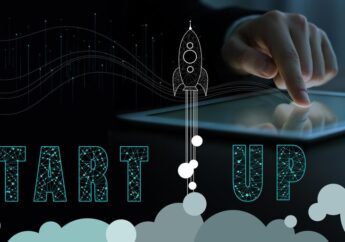How To Create A Productive Multigenerational Workplace
by Abdul Aziz Mondal Business Intelligence Published on: 17 January 2023 Last Updated on: 05 March 2025

Besides tectonic changes in the way people want to do their jobs in the post-pandemic era, the demographic structure of the workplace has changed dramatically with four generations sharing the same work environment.
The situation may seem complex as it is without additional labeling and stereotypes. This said, Millennials are often stereotyped as self-centered, entitled, tending to hop from one job to another, while Baby Boomers are perceived as privileged materialists opposing change and refusing to keep track of technological advancements.
Then you may have cynical, independent Gen-Xers who are self-proclaimed tech savvies prone to slacking. And finally, the Gen-Z generation is entering the global workforce perceived as lazy, spoiled, and over-attached to their phones.
Whether you take these labels as accurate or more likely inaccurate, the fact is that these four generations have different work preferences and that business leaders should take these preferences seriously. This is especially true in the disrupted workplace shaken with Great Resignation and Quiet Quitting as leading trends.
If you want to find out how your employees of different generations feel about their productivity and work flexibility, keep reading. You can use these insightful statistics to meet your employees’ changing needs, make the most of their productive time, attract, and retain top talent.
Generational Productivity In Numbers
The Future of Time, a global study on the topic, shows that the majority of younger employees often feel pressured to work traditional work hours even though this isn’t the most productive time.
However, 60% of Millennials and Gen Z employees feel they should stick to a 9-5 work schedule even if they aren’t the most effective compared to 56% of Gen X and 42% of Baby Boomers.
When asked to choose their optimal working hours, 26% of Gen-Z employees and 18% of Millenials opted for a 6 pm to 3 am time span. Most Baby Boomers stated that they feel the most productive between 3 am and 9 am.
Despite this stark discrepancy, the overall conclusion is that the majority of differently aged employees agreed that they worked most effectively between 9 am and 6 pm, i.e. traditional work hours.
If you want to get the most out of your employees you need to understand these generational differences and adapt to your employees’ preferences the best you can, offering flexible work arrangements.
If you want to get a detailed overview of your employees’ productivity and how it fluctuates during the day, try involving remote tracking tools like Insightful in your workflow.
This advanced app will offer detailed, real-time, and activity tracking reports to help you better understand your employees’ performance and adjust their work hours to make the most of their productivity peaks.
The Importance Of Work/Life Balance
This study confirmed that work flexibility is especially important to Millennials and Gen Z employees. An astounding 78 %of younger employees state that they would leave their current positions if not offered improved work/life balance.
With around 60% of them saying that they would leave their jobs for the possibility of remote work and increased control of their schedules, it’s clear what you’re expected to offer if you want to retain your younger workers.
This said Millennials and Gen-Z workers are drivers of this change more flexible workplace that allows them to combine their work with other aspects of their lives, working when they are the most productive.
The quiet quitting trend revealed the pain points of blurred work/life boundaries that may drive your employees to burnout. If you want to battle this widespread workplace trend that may ruin your productivity and brand image, you need to be open to suggestions and meet employees’ needs to choose when and where they want to work.
Equip Your Teams With Tools That Boost Productivity
Besides flexible work schedules, younger generations of employees want to use tools that would make them more productive and efficient. 9 out of 10 of them want to use tools that may automatize menial and repetitive tasks, like managing files or processing payments.
This would increase their time for focused work on critical creative tasks. Also, 70 % of Gen-Z employees, who will make up 25% of the workforce by 2025, say that they would stay with companies offering advanced tech-stack to make them more productive and efficient.
You can analyze the employee tracker data and identify the work processes that can be streamlined and tools that your employees can use to become more productive and time efficient. Then invest time and money into advanced tools that can optimize business processes and ensure that your employees stay productive while enjoying increased work flexibility.
Read Also:






































































































